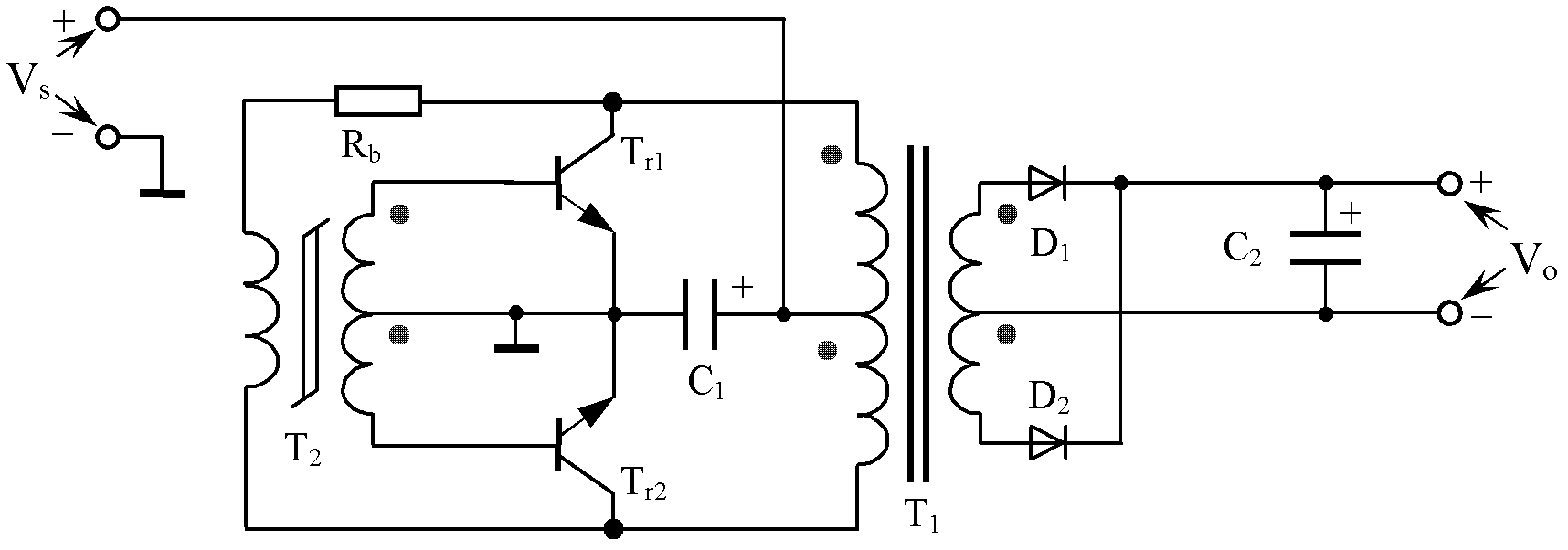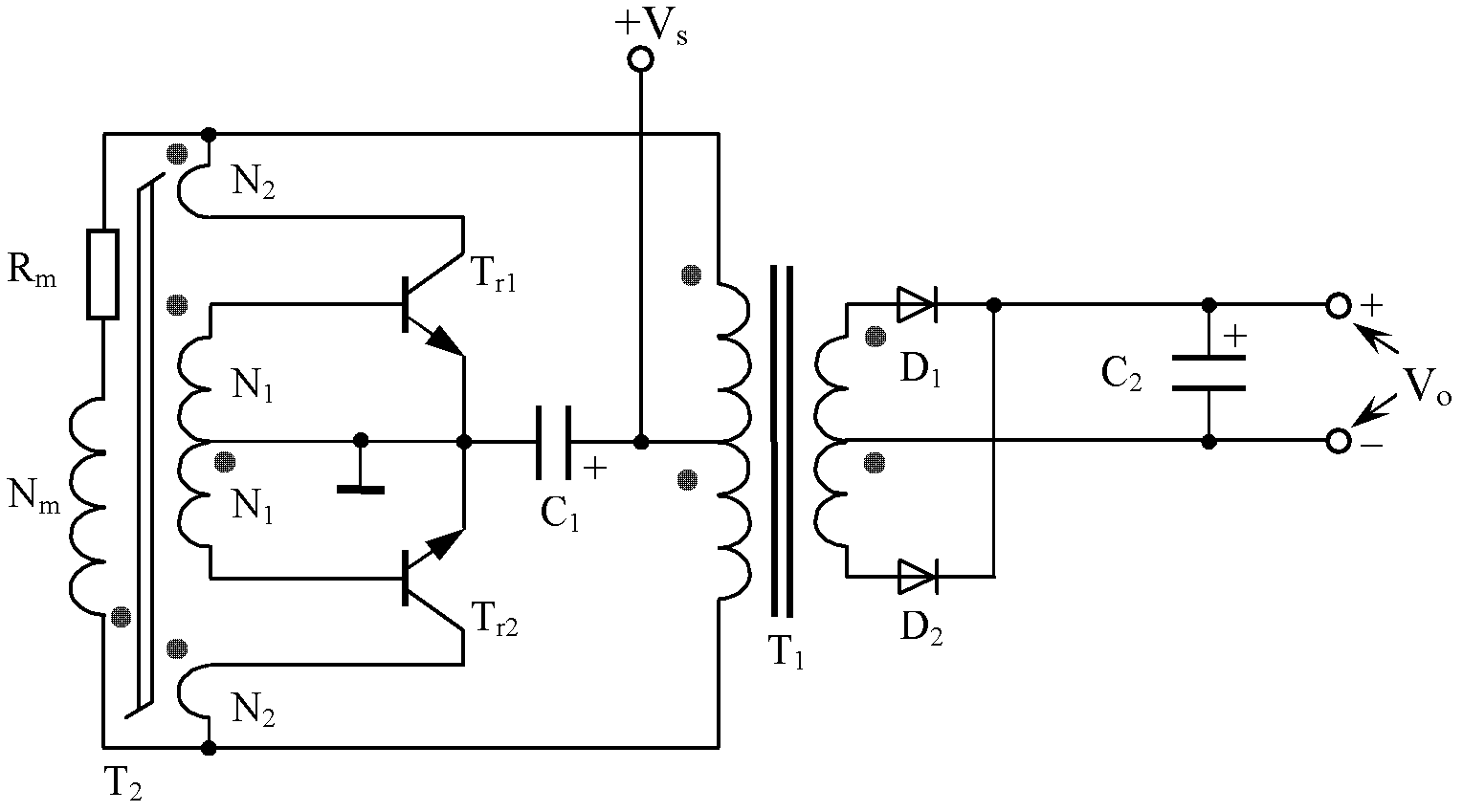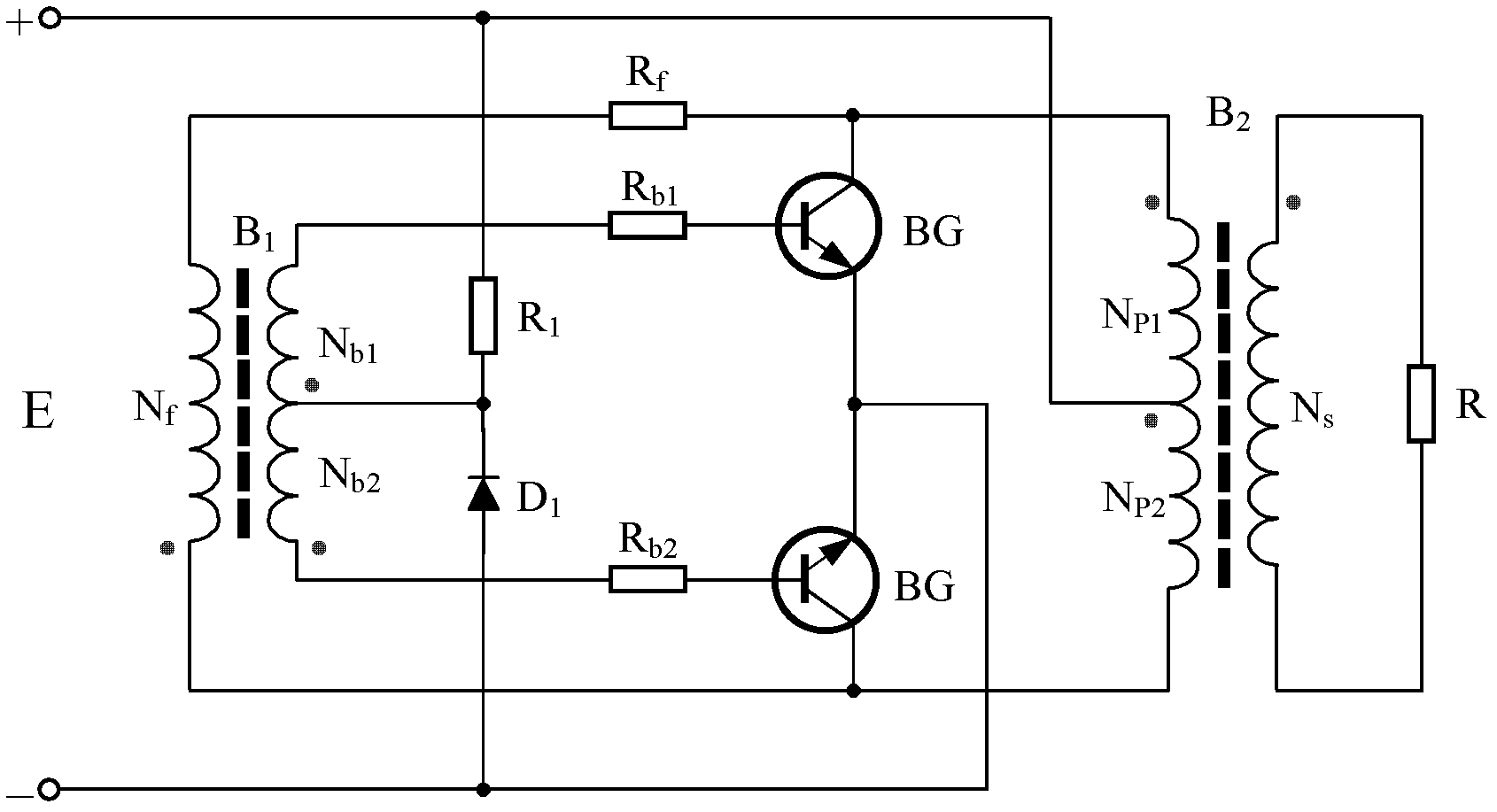A self-excited push-pull converter
A self-excited push-pull, converter technology, applied in the conversion equipment, instruments, DC power input converted to DC power output, etc., which can solve the problem of easy burnout, complicated circuits, and the circuit cannot be restored to normal by itself. Working status and other issues, to achieve the effect of good short-circuit protection performance consistency, easy debugging, and good self-protection ability
- Summary
- Abstract
- Description
- Claims
- Application Information
AI Technical Summary
Problems solved by technology
Method used
Image
Examples
Embodiment 3
[0098] The working principle of embodiment three is:
[0099] In normal operation, the capacitive reactance of the capacitor Cb is relatively large, and the resistor Rm plays a major role, and the circuit still works in the self-excited push-pull mode controlled by the magnetic saturation transformer T2.
[0100] When the output is short-circuited, as in the first embodiment, due to the effect of the two-terminal network 1, the circuit enters the high-frequency self-excited oscillation mode. At this time, the main transformer T 1 Also because the transmission efficiency is lower, the loss caused by the short circuit of the secondary side is converted to the main transformer T 1 The primary side is not large, so that the circuit does not vibrate, and the operating current of the circuit can be controlled in a lower range, which can also achieve the purpose of the present invention.
[0101] In the third embodiment, a capacitor or Figure 11-2 , Figure 11-3 , Figure 11-4 ,...
PUM
 Login to View More
Login to View More Abstract
Description
Claims
Application Information
 Login to View More
Login to View More - R&D
- Intellectual Property
- Life Sciences
- Materials
- Tech Scout
- Unparalleled Data Quality
- Higher Quality Content
- 60% Fewer Hallucinations
Browse by: Latest US Patents, China's latest patents, Technical Efficacy Thesaurus, Application Domain, Technology Topic, Popular Technical Reports.
© 2025 PatSnap. All rights reserved.Legal|Privacy policy|Modern Slavery Act Transparency Statement|Sitemap|About US| Contact US: help@patsnap.com



